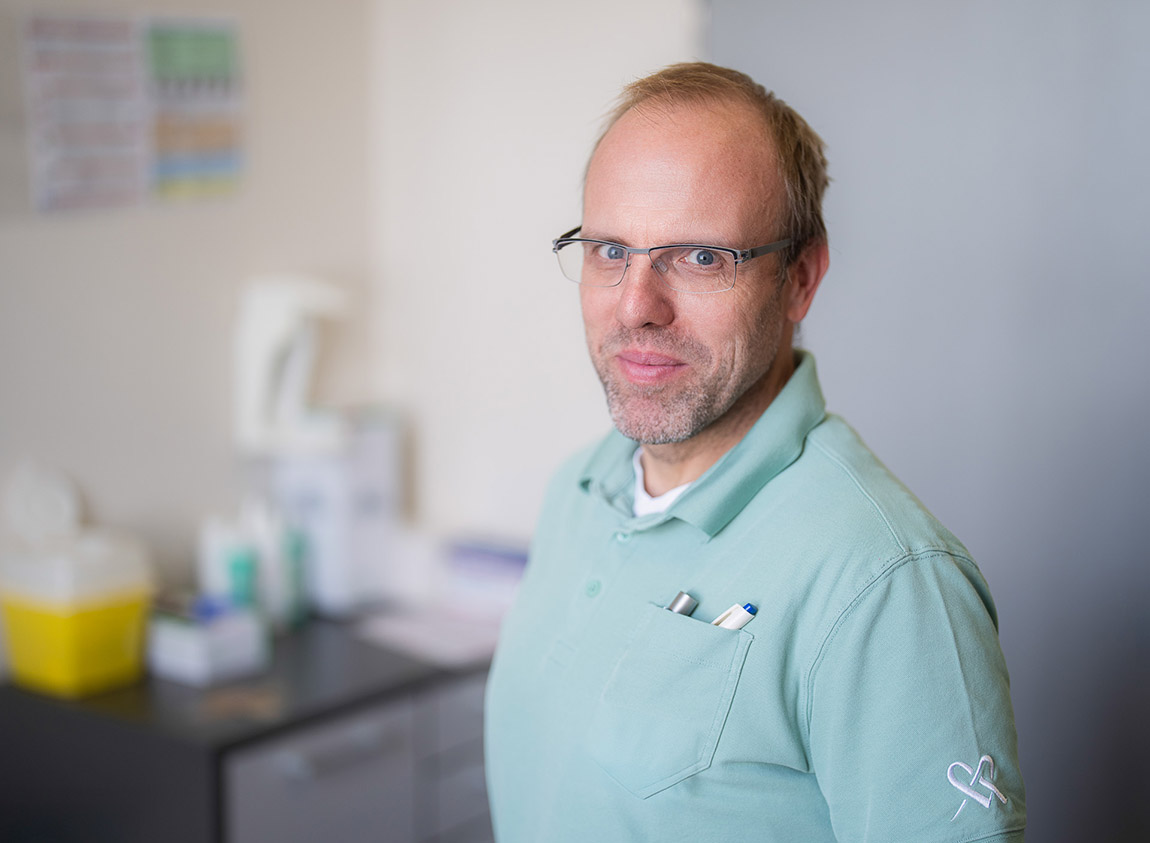OncoGenomX: A NEW WEAPON TO FIGHT BREAST CANCER
TEXT: SILKE HENKELE | PHOTOS: ONCOGENOMX AG

In the broad sector of human health, few diseases cause as much concern as breast cancer. While immense progress has been made in understanding and treating the disease, its complexity continues to challenge researchers, healthcare providers, patients, and families alike. So, let’s talk about breast cancer!
An estimated one in seven women in Europe and one out of eight women in the USA will statistically develop breast cancer. On a global level, a total of 2.3 million new diagnosed cases of breast cancer add to the count; nearly 700,000 women and men die of breast cancer each year. Alarming numbers indeed! Still, the efficacy of breast cancer treatments has not yet reached an optimal level.
“The diagnostics for breast cancer and the identification of a tumour’s molecular profile have significantly improved in the last few years,“ stresses oncologist Wolfgang Hackl, CEO and founder of OncoGenomX, a Swiss company that has set out to improve the efficiency of breast cancer treatment. “By relying on genomic tests and various clinical decision tools, oncologists can today determine a patient’s prognosis and risk, as well as the patient’s or tumour’s eligibility for specific treatment modalities. However, when it comes to choosing the most effective treatment combination for a particular patient or type of tumour, uncertainties and the danger of inefficient treatments still exist. One of our studies of 200 women revealed that 56% of women with advanced breast cancer were undertreated. On the other hand, studies conducted by Bartlett, Varga and Markopoulos from 2016, 2019 and 2020 respectively show that 60% of women in the early stages of breast cancer are overtreated. A large percentage of patients are thus likely to face over- or undertreatment. These results underpin our goal: minimise inefficient, suboptimal medication and unnecessary costs by proposing the most efficient treatment of breast cancer.”
PredictionStarTM
PredictionStarTM, OncoGenomX’ decision support tool, will reach this goal. “In PredictionStarTM, we have devised efficient decision guidance. It will be able to predict the most comprehensive and efficacious treatment and thus make precise, individual cancer treatment the standard for all breast cancer patients. PredictionStarTM allows for the flexible combination of approved treatments according to biological tumour properties and the likelihood of each treatment to work on the specific tumour of an individual patient,” explains the oncologist.
How does PredictionStarTM work? “The tool is a complement to the hospital’s own health-data systems and processes data that is routinely collected, i.e., clinical, pathological, biological, and genomic data. It just needs the click of a button to upload the respective data to receive a recommendation on the treatment plan that is most likely to be effective in a particular patient and tumour. I want to stress that PredictionStarTM merely provides additional information to support medical decisions. The actual therapy is a joint decision by doctor and patient. Also, the data is always anonymised and never leaves the hospital’s IT system. Our tool complies with all national and international data security protection requirements, only authorised personnel has access to the tool. The data is immediately removed from the app after the enquiry,” Hackl points out.

Advantages for patients, clinics, cost-bearers, and oncologists alike
The patients’ benefits have already been mentioned: individual treatments adapted to their condition and particular type of tumour. The avoidance of under- or over-treatment increases the patients’ chances of efficient medication and also promises a highly satisfactory clinical outcome.
But others also benefit from PredictionStarTM. “First of all, there are the clinics. They will be able to offer individually tailored treatment for all patients. This helps to avoid costs that may arise as a result of frequent visits to the doctor, more frequent and longer stays in hospital, changes in a treatment, preceding additional examinations, and the treatment of side effects.
As PredictionStarTM reduces the risk of under- or over-treatment,” continues Hackl, “it reduces high subsequent costs for cost-bearers and also lessens their expenses for suboptimal treatment combinations.”
The fourth beneficiary is oncologists. “PredictionStarTM is able to predict the effectiveness of a treatment with a probability of over 80%. This is good news for oncologists who will be able to make their treatment decisions based on reliable information about the most effective treatment of a specific tumour in a specific patient,” stresses the CEO.

CEO and founder Wolfgang Hackl (l.), co-founder and CSO David Demanse (r.).
When?
PredictionStarTM sounds like a tool that the world has been waiting for for a long time. Is it already used in clinics? “We are currently in the last stages of product development. PredictionStarTM will be available for research and clinical utility studies in twelve to fifteen months,” confirms Hackl.
Individually tailored treatments against breast cancer – what a bright outlook indeed. Why not get interested in PredictionStarTM, the tool that has the potential to reshape the future of breast cancer treatment. Integrating this unique decision tool in clinical institutions means taking decisive steps forwards – not only for the sake of patients but also to save costs and time.

Web: www.oncogenomx.ch
Subscribe to Our Newsletter
Receive our monthly newsletter by email





